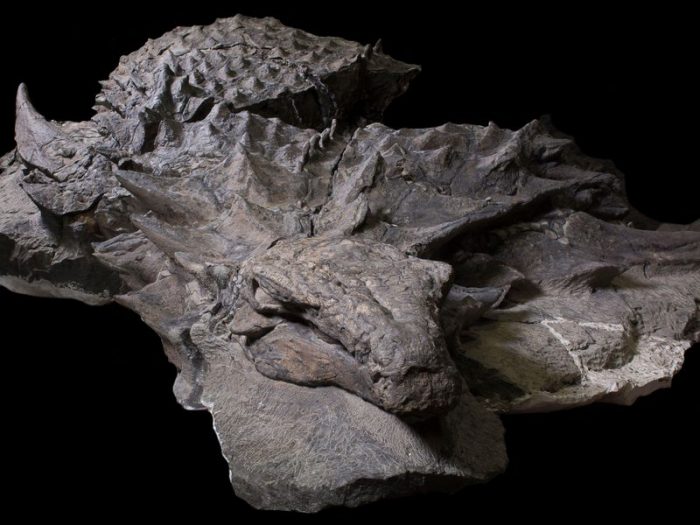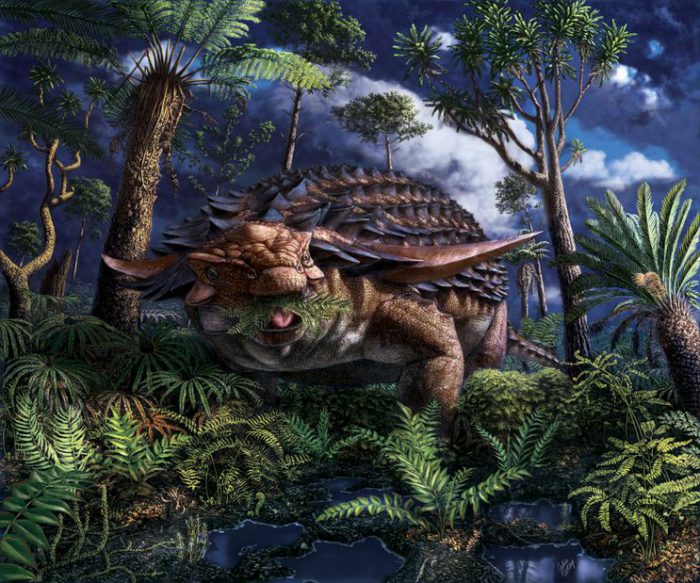Back in May 2017, we posted about a mummy. Why would we do such a thing with Halloween five months away? Because this was no ordinary mummy...
It was a 110-million-year-old dinosaur mummy!
Since then, the incredible nodosaur fossil—whose species was named Borealopelta markmitchelli—has gone on to become famous as the world's best preserved dinosaur. The Alberta discovery has such well preserved skin, bony plates, and keratin (the material that makes nails and horns) that it almost appears to just be asleep.
And now, scientists have discovered that something else was mummified, too. Its last meal!
A forest of ferns...
A modern fern forest. These plants date back many hundreds of millions of years, long before flowers first appeared on Earth. (Getty Embed)
A new study of the animal's stomach show that what it ate had also been well preserved. The contents were mostly made up of ferns—a plant still around today. This is really interesting because nearby plant fossils show that ferns were just one of many plants available to the animal. It appeared to really like ferns!
But they also noticed something else. There was a significant amount of charcoal in the stomach.
...recently burned!
Forest fires are a part of a natural cycle that kills of old growth, returns nutrients to the soil, and clears the way for newer plants. (Getty Embed)
When scientists find charcoal along with plants in the stomachs of herbivores, it means one thing. They were feeding in an area that recently had a forest fire.
Many modern herbivores also seek out areas that just had forest fires. Not only are the plants there newer and easier to digest, the soil after a fire is also full of lots of nutrients. The nutrients are added by the ashes of the burned plants and trees.
Just one meal

The nodosaur fossil known as the dinosaur mummy. Nodosaurs were cousins of ankylosaurs, but they lacked the bony club on their tails. (Royal Tyrrell Museum of Paleontology)
Scientists aren't saying that this is all that B. markmitchelli ate. After all, this is just one meal in the stomach of one dinosaur found in the only fossil that's ever been discovered of this particular nodosaur.
But it is fascinating. Because of the similarities with modern plant eaters like wildebeest, it suggests that this prehistoric herbivores like this 6-metre (18-foot) long one had a lot in common with today's green-munching animals. Here's hoping that more fossils can be discovered to help us understand these creatures even better!
 Yum, yum, yum! An illustration of the nodosaur enjoying some delicious ferns. (Illustration by Julius Csotonyi, Royal Tyrrell Museum of Paleontology)
Yum, yum, yum! An illustration of the nodosaur enjoying some delicious ferns. (Illustration by Julius Csotonyi, Royal Tyrrell Museum of Paleontology)










❗ Wow!
at first when i read the word charcoal on here i thought it might breathe fire
same!
😀 Wow it’s fantastic!
Wow?
NiCe!!!!
AMAZING ❗ 😯
Hi